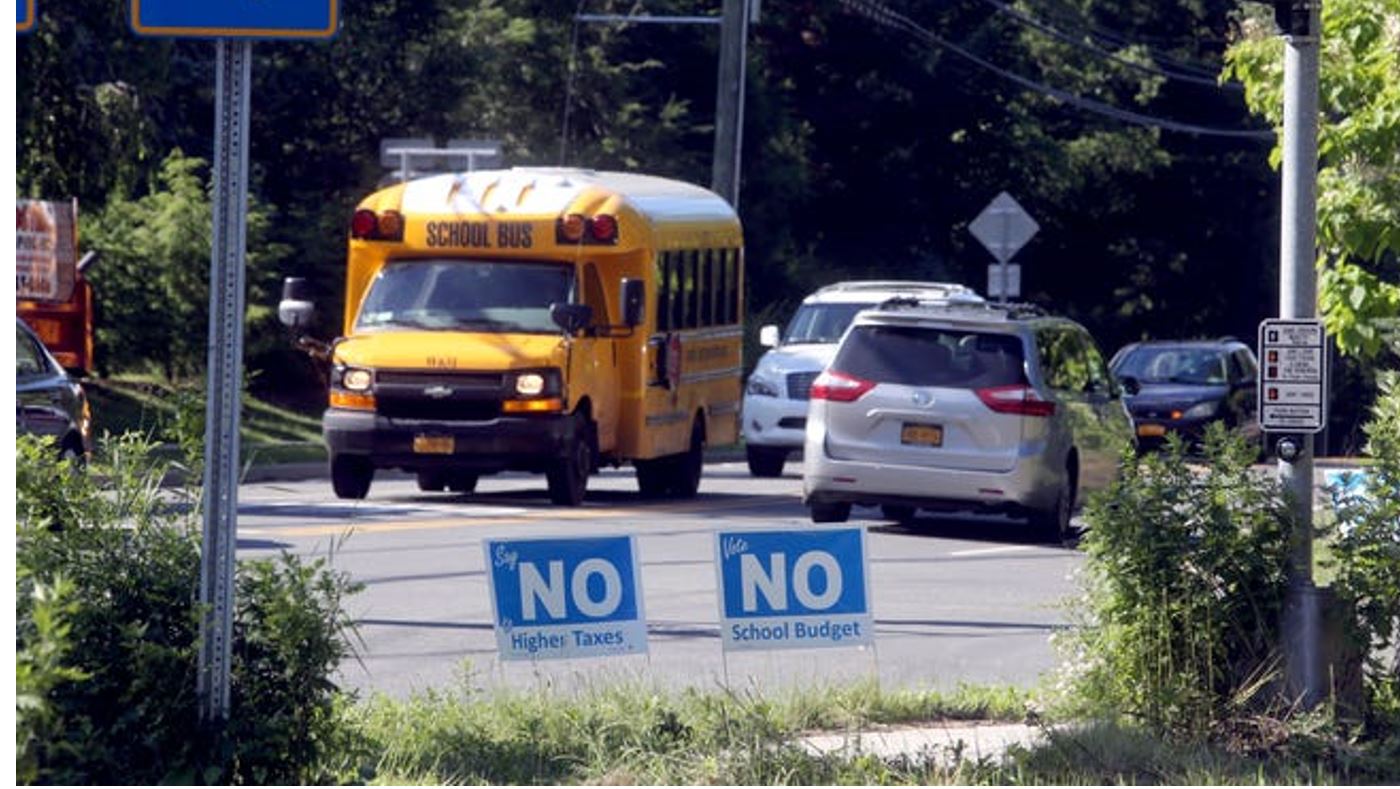Foil: Your right to Know.
East Ramapo’s state monitors have repeatedly warned that the school district is teetering on a “fiscal cliff.” A $40 million hole looms for this year’s budget, and if it’s not fixed in time, the district faces dire consequences.
For the past couple years, the district has been able to plug budget holes with tens of millions of dollars in federal COVID aid flowing in.
But that aid dries up next year.
The federal aid was intended to help schools with pandemic-related costs, from facility upgrades to student counseling. But East Ramapo has used a portion to cover staff and other costs. The extra funding has also served a bit like a line of credit, with the district citing the aid coming in as the way it could pay off short-term loans and bonds.Without that aid, the district won’t have the legal mechanism to borrow, said state-appointed monitor Bruce Singer during a recent Zoom discussion of the district’s long-term fiscal plan.
“It’s unsustainable, the finances of the district,” Singer said during the Sept. 28 meeting. “But next year, it has to be resolved.”
State Assemblyman Ken Zebrowski helped lead the legislative push for state monitors in 2016, and an effort last year to give monitors veto power over certain decisions. The West Nyack Democrat has helped boost state aid to the district numerous times.“They are completely upside down,” said Zebrowski, who has discussed the looming fiscal cliff, and pathways out of the mess, with East Ramapo Superintendent Clarence Ellis.
East Ramapo: 1,600 may begin school without a bus seat. Here’s why, and what’s being done
Test results:Release of full math, ELA exam scores delayed in NY
Election 2022:Hasidic voting blocs may play key role in two Hudson Valley congressional races
The district’s challenges are well-documented: a quarter of school-age children who live within the district’s boundaries attend public schools. The overwhelming majority of kids attend private schools, mostly yeshivas that serve the region’s burgeoning Orthodox and Hasidic Jewish population. Many public-school children are English language learners; graduation rates are the lowest in the county and dropout rates, especially among Latino students, are high. Most children in both the public and private schools are considered low-income.
Meanwhile, East Ramapo’s finances are strained by its elaborate transportation needs − most public and private school students are entitled to busing.
And the district has seen the most budget defeats in the state over the last decade, thanks to the private school community’s ability to marshal “no” votes and poor voter turnout in the public school community.
That lack of community support at the polls creates ripple effects. “The unwillingness of district voters to authorize budgets that meet the needs of students is a key credit risk,” according to a Moody’s Credit Opinion, issued July 27, that outlined the district’s precarious fiscal health.

Signs urging voters to vote no in the East Ramapo school budget were posted at the intersection of Grandview Avenue and Route 306 in New Hempstead June 20, 2017. Voters in the school district were voting on the revised budget Tuesday after the first budget was defeated in the May 16th elections. Seth Harrison/ The Journal News
Ellis, fiscal monitor Bruce Singer and education monitor Mary Fox-Alter declined interview requests. Board President Shimon Rose had not returned email requests for comments.
Recipe for a crisis
The math is pretty straightforward: The district folded into its general fund about $31.9 million received for 2022-2023 through the federal Coronavirus Response and Relief Supplemental Appropriations Act.
The district received the most federal COVID-era aid of any district in the region, primarily because of high poverty rates.Despite the federal windfall, the district is projected to be about $8.1 million in the hole. This year’s budget, a state-imposed contingency plan after voters rejected two proposals, is about $256.4 million.
East Ramapohas no reserves. The district’s bond rating is one step above junk, with Moody’s credit rating at Baa3.
Monitors say the budget must be balanced by June 30, 2023, the end of the budget year, or else.
“The district cannot end June 2023 with another negative fund balance,” Singer said during the Zoom community meeting. “That will destroy their credit rating.”
The monitors’ slideshow said they are ready to act: “… the monitors will use their authority under the law to compel district compliance and/or notify the (state Education) Commissioner of the need for intervention.”
Ellis has formed a “budget crisis team” that is meeting weekly, the district reports.
Even as the budget is strained, costs are rising. Public school enrollment has jumped from 9,387 students to 10,500 in three years. The district needs to hire more teachers, especially English as a Second Language specialists, and to boost other staff and programs.
A public hearing on the long-term fiscal plan takes place during an Oct. 3 school board meeting at 7:30 p.m. at the district’s administration building in Spring Valley.
Budget defeats add up
Spring Valley NAACP President Willie Trotman said the alarms about a fiscal crisis have sounded continually since a first state monitor’s report, issued in 2014, called “East Ramapo: A School District in Crisis.”
“It feels like there is an annual East Ramapo fiscal crisis of the year,” said Oscar Cohen, NAACP Spring Valley Chapter Education Committee co-chair.
The district’s long-term instability starts from repeated budget defeats. Taxpayers have defeated six of East Ramapo’s 11 initial budget proposals since the state’s property-tax levy cap went into effect in 2012.
East Ramapo has had to freeze its tax levy four of the last five years − twice because two budget plans were defeated, once when the school board went straight to a contingency budget after an initial budget defeat, and once when the school board proposed a budget with no tax levy increase.”If the budget had been passed just at the 2% tax cap over the past seven years, would have $22 million in reserves by now,” Singer said during the Sept. 28 presentation.
Busing as cost-driver
A recent analysis by the monitors showed the cost of universal busing and lax policies: the transportation portion of this year’s budget, at $61.8 million.
The analysis predicts cost-savings if the district switched from providing universal busing to following the state’s guidelines that mandate transportation services for students who live 2 miles from their campus for grades K-6 and 3 miles for grades 7-12.
According to the analysis, the cost for pubic-school busing would drop from almost $12.6 million this year to about $6.8 million; for private schools, from $37.7 million to $14.3 million.
The savings, the monitors said, would top $29 million in one year.
Universal busing has existed in the district since the 1990s. Subsequent referendums to maintain the practice show voters want the system in place.
Meanwhile, a new district transportation director has taken steps to trim this year’s costs. But the changes, including adhering to an April 1 deadline to register for bus service for private-school students, has spurred complaints − including from school board members themselves
To read the full Journal News coverage click here.





